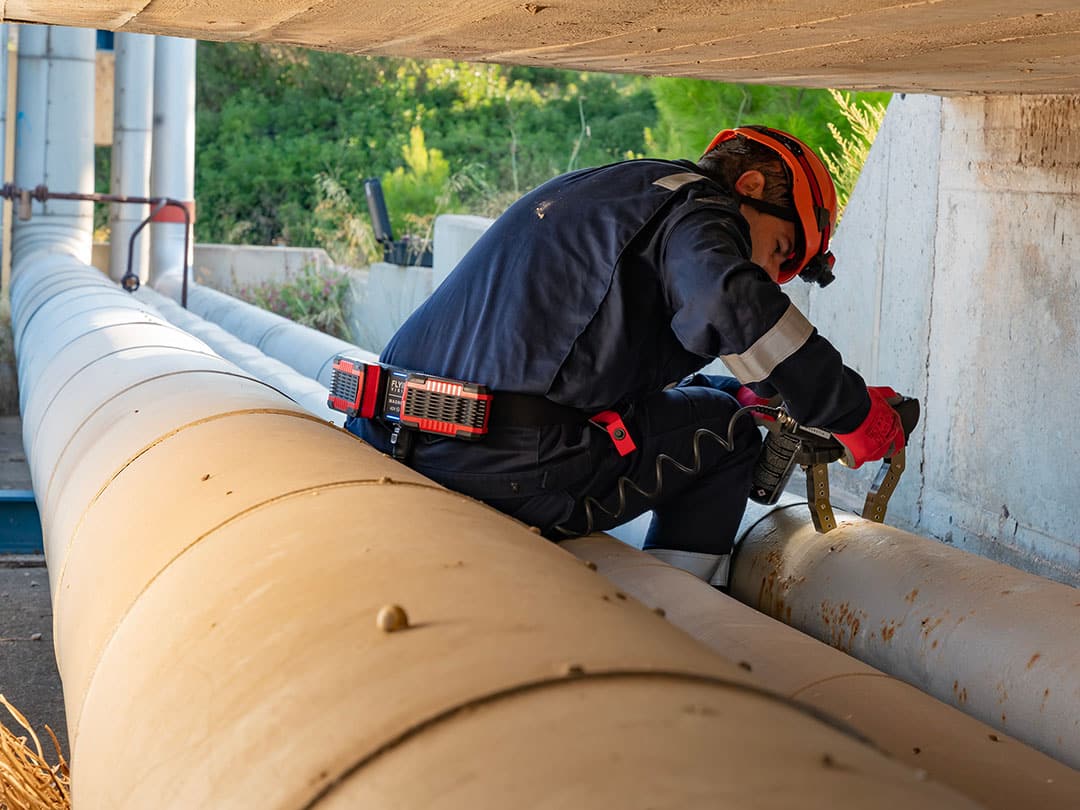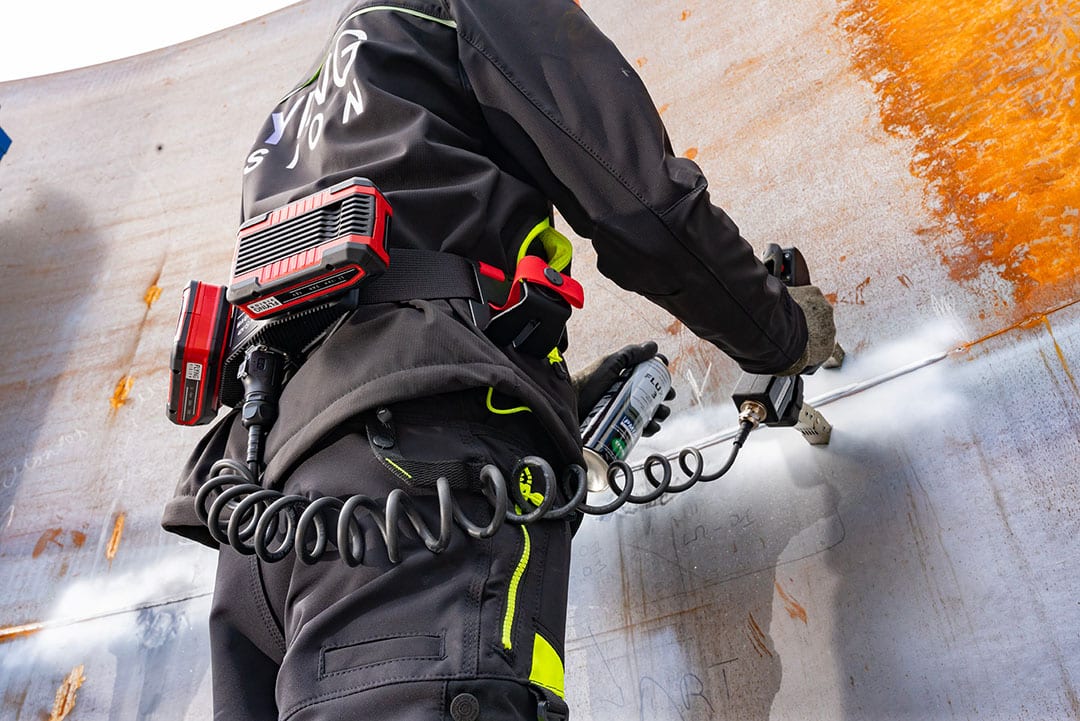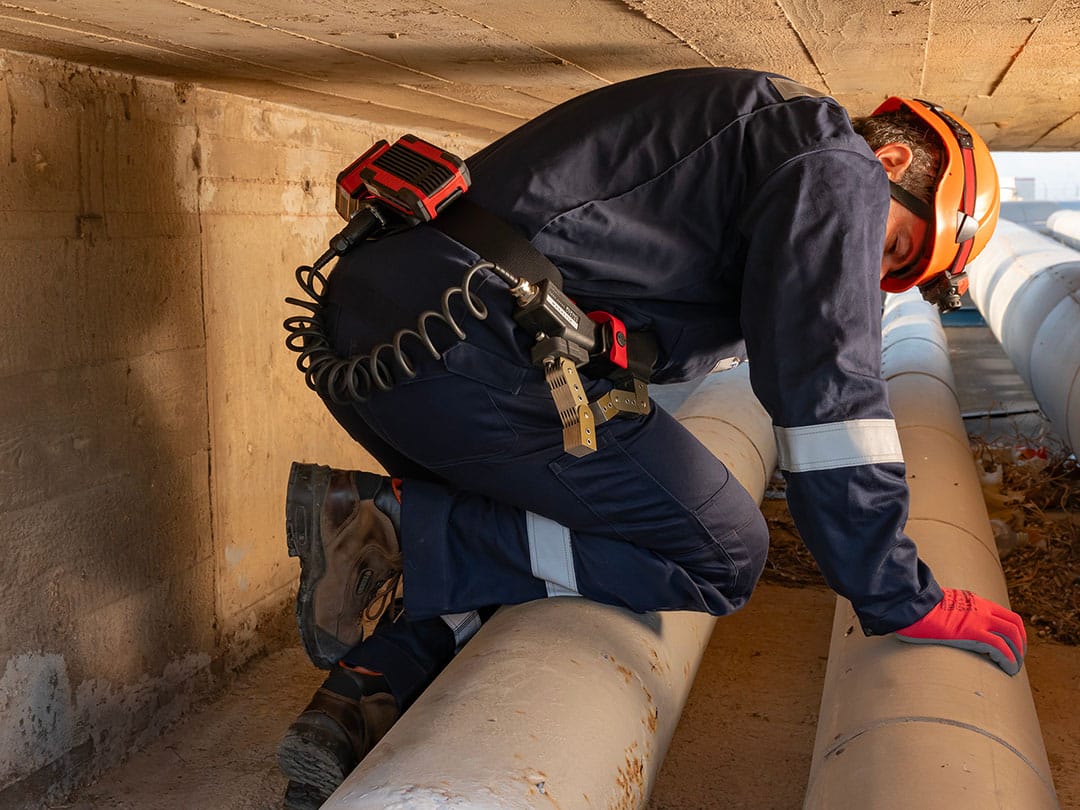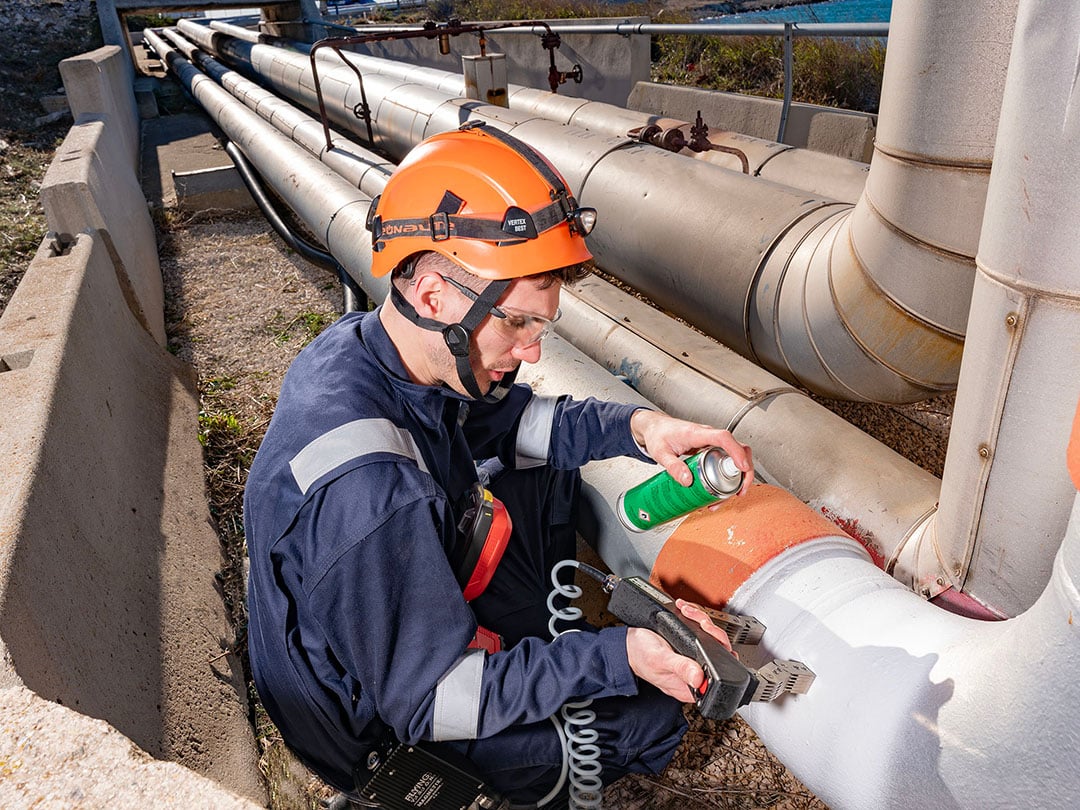What is Magnetic Particle Inspection (MT)? Definition, Benefits, and Applications

Magnetic particle inspection (MT) is one of the most widely used non-destructive testing (NDT) methods for detecting surface flaws and discontinuities in ferromagnetic materials. This reliable, comprehensive inspection method has become essential for assessing the integrity of a wide range of parts and structures in various industrial sectors – all in a single operation.
Discover all about magnetic particle testing with Flying Vision, its concept, its application, and its advantages, and take advantage of the best technical and robotic solutions to detect surface defects in all your ferromagnetic components:
- What is magnetic particle inspection?
- Why use magnetic particle testing?
- How does MPI testing work?
- What are the applications of magnetic particle inspection?
- What are the advantages of magnetic particle inspection?
- What are the applicable standards for magnetic particle testing?
What is Magnetic Particle Inspection?
Magnetic particle inspection is a non-destructive testing method used to visually inspect various parts (pipes, rails, welds, etc.). It relies on magnetizing ferromagnetic materials (such as iron, cobalt, nickel, and cast iron) to quickly and accurately detect surface-breaking flaws like cracks, fissures, or shallow subsurface discontinuities.


Why Use Magnetic Particle Testing?
Magnetic particle testing allows precise detection of defects that visual inspection alone cannot reveal. Suitable for both laboratory and on-site use, MPI testing delivers high accuracy for detecting surface flaws in ferromagnetic components such as:
- Welds (butt and fillet welds),
- Cast or forged parts,
- Pipes,
- Boilers,
- Heat exchangers,
- Turbine blades,
- Automotive components,
- Rolled and drawn products.
Although it can be used during the design phase, magnetic particle inspection is primarily used during maintenance to verify design quality and structural integrity. It can also be conducted after heat treatment or before/during/after welding.
How Does MPI Testing Work?
Magnetic particle inspection involves direct or indirect magnetization of a test object using either a continuous or alternating magnetic field. If there is surface or subsurface discontinuity, it disrupts the magnetic field and causes magnetic flux leakage. There are two types of magnetic particles used – dry magnetic particles (dry powder) and wet magnetic particles (liquid suspension), applied to the surface.
This product – also known as a magnetic developer – is typically made of fine iron particles and can be viewed under white light or UV light in the case of fluorescent testing. The particles accumulate where the magnetic field is disrupted, making surface discontinuities visible.
This type of testing, performed using electrical current or magnetic fields, is exclusively used on ferromagnetic materials due to their high magnetic sensitivity, which makes flaws clearly detectable.
With magnetic particle inspection, two outcomes are possible:
- No surface defect: The magnetic field flows smoothly through the material, indicating a homogenous surface.
- Surface defect present: The magnetic field is disturbed (distorted lines), resulting in magnetic leakage. The product is drawn to the defect, clearly indicating its location and origin.
After the MPI test, the inspected part must be cleaned and, in some cases, demagnetized.
To ensure optimal field inspections, Flying Vision offers the MAGNETIX MGN3, the ultimate magnetic particle inspection solution for reliable, efficient, and secure testing – even in the most demanding environments.

What Are the Benefits of Magnetic Particle Inspection?
Magnetic particle inspection is a versatile method offering many advantages for NDT. Quick and cost-effective, MPI testing can:
- Detects even the smallest surface and near-surface defects (up to a few millimeters deep),
- Suitable for in-service inspections,
- Applicable to parts of all sizes, from a few millimeters to several meters long, whether smooth or rough,
- Provides immediate and accurate detection results, indicating the number, size, and location of defects,
- Enables easy field inspections with lightweight, robust, and portable equipment – such as our magnetic yokes.
However, magnetic particle testing is limited to ferromagnetic materials and their alloys. It also requires the use of potentially hazardous, flammable, or volatile products. In addition, an MPI test cannot detect deep subsurface defects and may require the removal of thick paint coatings.
What Are the Standards for Magnetic Particle Testing?
Several standards apply to magnetic particle inspection, including:
- NF EN ISO 12707: Terminology for magnetic particle inspection,
- NF EN ISO 3059: Conditions for magnetic particle inspection viewing,
- NF EN ISO 9934-1: General principles,
- NF EN ISO 9934-2: Detection products,
- NF EN ISO 9934-3: Equipment specifications.
Looking for the best magnetic particle inspection tools for your inspections? Flying Vision is your trusted partner for high-performance MT solutions.